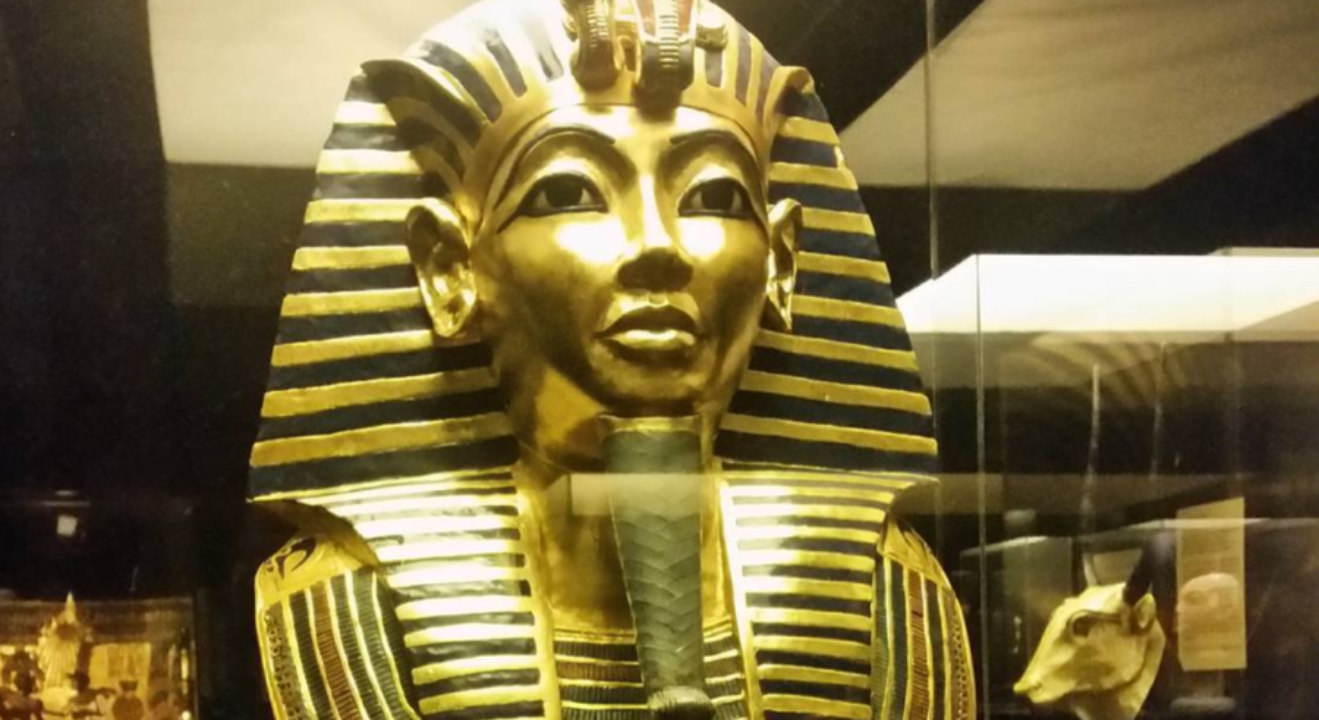Culture August 24, 2017
Walk like an Egyptian.


His full name is Tutankhamun, but you probably know the famous ancient Egyptian pharaoh as King Tut.
When Howard Carter discovered King Tut’s tomb nearly intact in 1922, the event garnered worldwide press coverage. Suddenly, there was a surge of modern interest in ancient Egypt. Soon after, the famous pharaoh even received his own national holiday, King Tut Day.
King Tut Day is celebrated on Nov. 4 to commemorate the date Carter found his tomb in Egypt’s Valley of Kings.
To celebrate this day, ENTITY compiled a list of five facts about King Tutankhamun.
Surprisingly, one of Egypt’s most famous pharaohs didn’t rule for very long. King Tut only lived to be 19 years old. In addition, he only ruled from 1132 to 1323 B.C.
His death is still debated among historians, with some believing it was an innocent accident and others attributing it to murder. King Tut was found with a lump on the back of his head, but the controversy lies in how it got there.
Some historians attribute the lump to lung disease or a brain tumor. Others think its presence is more sinister and attribute it to murder. They allege that King Tut’s successors killed him as a boy to solidify their quick ascension to power.
A third theory, however, states that the lump on King Tut’s head wasn’t his only injury. He also had an injured leg, as reported by the Bibliography website, which theorists believe to suggest he had an accidental injury that led to infection and then death.
Originally, King Tut’s name was Tutankhaten, which translates to “living image of the Aten.” Aten is the Egyptian sun god, who King Tut’s father worshipped.
When King Tut took power, he rejected his father’s religious views and instead worshipped Amun, the king of gods. Hence, he changed his name to Tutankhamun, so the translation changed to “living image of the Amun.”
However, his name wasn’t the only thing King Tut changed. According to the History website, he also rejected his father’s decision to make the capital city a place dedicated to Aten. Instead, he changed it back to the city of Thebes.
King Tut was also recognized by other names apart from Tutankhaten and Tutankhamun. In Egypt, royals were known by five names, which were often phrases of words.
These included:
Horus name: Kanakht Tutmesut (the strong bull, pleasing of birth)
Nebti name: Neferhepusegerhtawy Werahamun Nebrdjer (one of perfect laws who pacifies the two lands; great of the palace of amun, lord of all)
Golden Horus name: Wetjeskhausehetepnetjeru Hegamaatsehetepnetjeru Wetjeskhauitefre Wetjeskhautjestawyim (who wears crowns and pleases the gods; Ruler of Truth, who pleases the gods; who wears the crowns of his father, Re; who wears crowns and binds the two lands therein)
Prenomen: Nebkheperure (lord of the forms of Re)
Son of Re: Tutankhamun Hekaiunushema (Living Image of Amun, ruler of Upper Heliopolis)
Another interesting artifact found in King Tut’s burial chamber near his body was an ostrich-feather fan. However, this wasn’t a small object. In fact, it once combined a long gold handle with 42 alternating brown and white ostrich feathers attached.
When it was found, the feathers had long withered away, but the handle still remained with inscriptions telling its significance.
As the writings depicted, King Tut himself set out to the desert near Heliopolis to hunt ostrich and then returned satisfied with his prey in hand.
Ostrich feathers were considered a luxury item in ancient Egypt and it wasn’t uncommon for royals to seek them out. In fact, hunting ostriches helped King Tut and other royals show their power over nature.
Many think the opening of King Tut’s tomb wasn’t just bringing to light the life of the boy pharaoh. They also believe a curse was unleashed that harmed anyone associated with opening the tomb.
The curse is commonly known among conspiracy theorists as the “Curse of the Pharaoh” or “King Tut’s Curse.” According to Live Science, theorists claim that the financier of the project, George Edward Stanhope Molyneux Herbert, died because of his role in King Tut’s excavation.
However, the curse theory has been debunked. Although Herbert died a year after Carter found King Tut, his death is attributed to an illness he had prior to the discovery. Historians believe he died of a mosquito-transmitted disease. Carter also lived for another 16 years after he found King Tut and died of cancer.
In 2010, historians shocked the world by claiming society’s favorite boy pharaoh was actually the product of parents who were brother and sister.
And it isn’t too far fetched because it was common practice among royals at the time to keep it in the family and preserve pure bloodlines. In fact, King Tut married his own half-sister.
Historians also believe he was born sickly and his cleft palate and club foot are a result.
Now that you’re an expert in everything King Tut, you’ll have plenty of fun facts to share with your friends on King Tut Day.